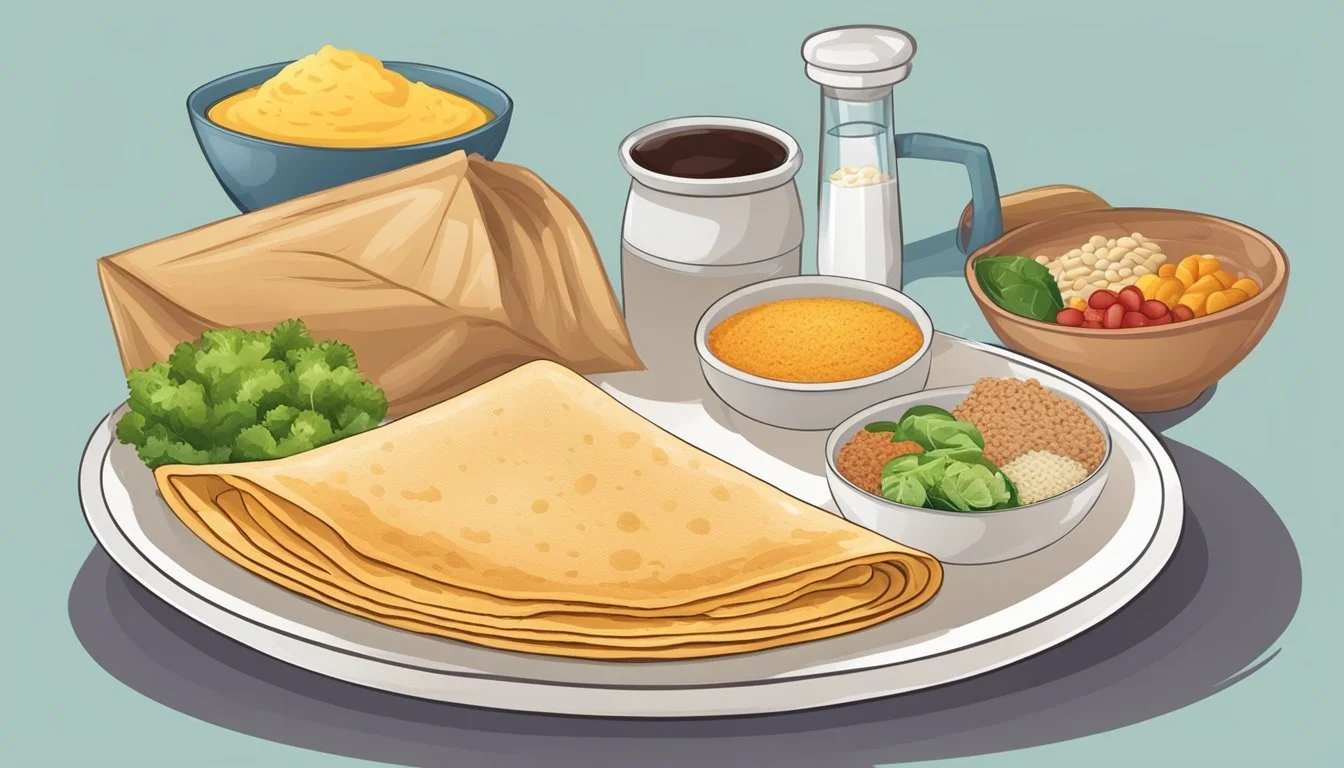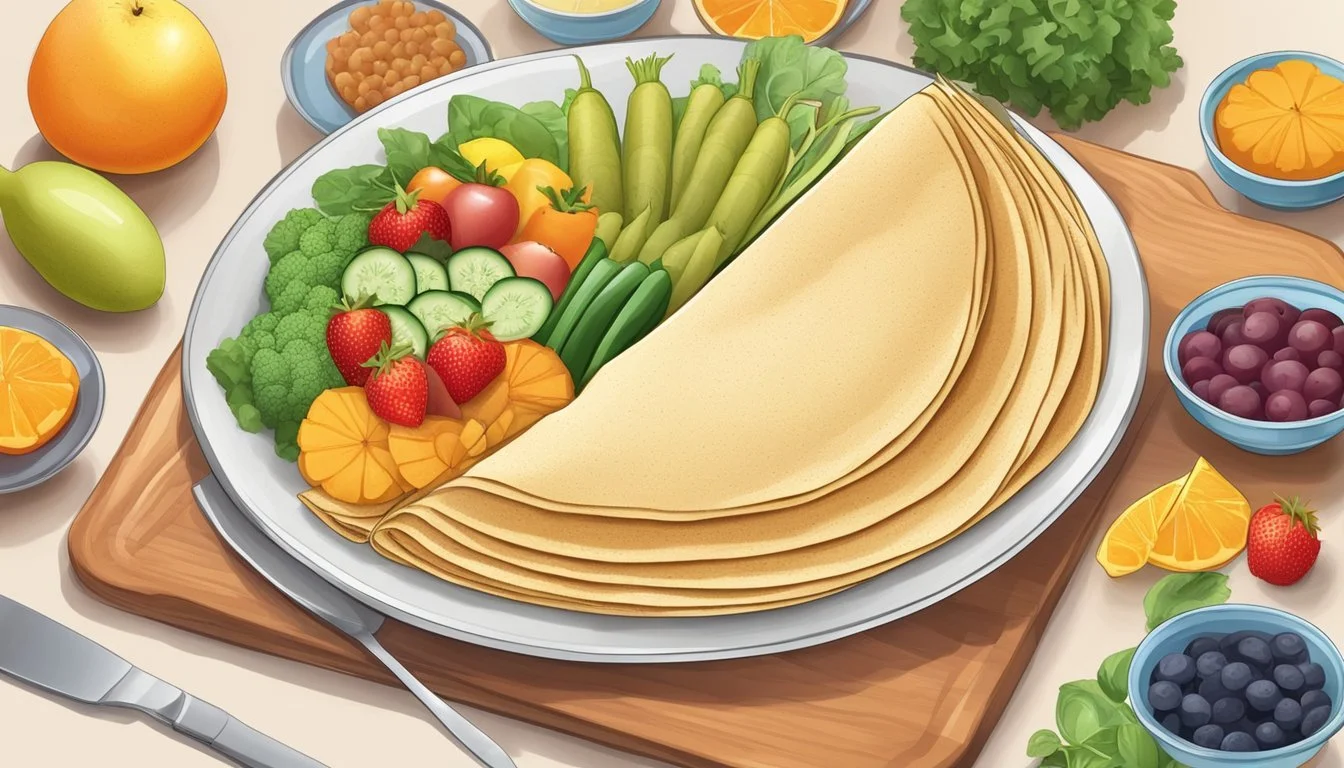Can Diabetics Eat Dosai?
Exploring Safe Dietary Choices
For those managing diabetes, navigating the world of flavorful dishes can be challenging. Among such dishes, dosai stands out as a beloved South Indian staple. Yes, individuals with diabetes can eat dosai, but they need to pay attention to certain factors to keep their blood sugar levels in check.
A dosai, primarily made from rice and lentils, inherently contains carbohydrates which can impact blood sugar. The glycemic index (GI) of dosai varies between 50 and 90, influenced by its preparation and ingredients. Consulting with a registered dietitian can help tailor a diabetic diet that includes dosai without causing significant blood sugar spikes.
Balance and moderation are key when incorporating dosai into a diabetic diet. Eating two to three medium-sized dosai per meal is often recommended, paired with fiber-rich sides such as sambar and vegetable chutneys. Whole-grain varieties like wheat dosai are also advantageous, adding nutritional value and further helping manage carbohydrate intake.
Nutritional Profile of Dosai
Dosai, a popular South Indian dish, is made from rice and black gram (urad dal) and offers a rich profile of macro and micronutrients. It is also important to consider its glycemic index which can impact blood sugar levels.
Macronutrients in Dosai
A typical serving of dosai provides a balanced amount of carbohydrates, proteins, and fats. Carbohydrates are the primary macronutrient, contributing to energy supply. Each serving contains around 18 grams of carbohydrates. Fiber content ranging from 1 to 2 grams aids in digestion.
Protein levels in dosai are modest, around 3 grams per serving, stemming from the urad dal. Fat content is low, especially if prepared with minimal oil, contributing just 2-3 grams of fat per serving. This makes dosai fairly low in calories, typically ranging between 100-150 kcal per serving.
Micronutrients in Dosai
Dosai also provides essential micronutrients. It offers modest amounts of calcium and iron, stemming from its primary ingredients. A single serving can provide around 20-30 mg of calcium and about 1 mg of iron, important for bone health and blood oxygenation respectively.
Vitamins such as B-vitamins are present due to the fermentation process, aiding in metabolic activities. Additionally, small amounts of potassium (100-150 mg per serving) help in maintaining fluid balance and proper functioning of muscles.
Glycemic Index and Dosai
The glycemic index (GI) of dosai varies depending on its preparation. Standard dosai, primarily made from rice and urad dal, holds a moderate GI, typically around 50-70. This signifies a moderate impact on blood sugar levels post-consumption.
Using whole grains such as brown rice or adding ingredients rich in fiber can reduce the glycemic index further. For diabetics, controlling portion sizes and pairing dosai with fiber-rich sides like sambar or chutney can help manage blood glucose levels effectively.
Dosai in a Diabetic Diet
Managing diabetes involves careful attention to carbohydrate intake and meal timing. Dosai, a common South Indian dish, can be part of a diabetic diet with strategic choices regarding ingredients and portion control.
Carbohydrate Management with Dosai
Dosai primarily consists of rice and lentils, which are source of carbohydrates. The glycemic index (GI) of dosai can range from moderate to high, depending on the preparation. A regular dosai has a GI of about 70-90.
Key Tips:
Opt for whole-grain dosai.
Use brown rice or millet instead of white rice.
Supplement with lentils that have a low GI.
These choices help manage blood sugar levels and improve insulin sensitivity.
Fiber Content and Digestive Health
Including fiber in meals can significantly impact blood sugar levels. Whole-grain dosai variants or those incorporating lentils like green gram (pesarattu) are better for those with diabetes.
Benefits:
Enhances digestion.
Regulates blood sugar spikes.
Improves insulin response.
Pairing dosai with fiber-rich sides like chutney made from vegetables or sambar can add to the fiber content. This combination aids in a slow release of glucose into the bloodstream.
Portion Control and Meal Planning
Even when opting for healthier dosai varieties, monitoring portion sizes is essential. Eating smaller dosai can help keep carbohydrate intake in check and manage blood glucose levels effectively.
Guidelines:
Serve with plenty of vegetables.
Avoid high-fat additions like ghee.
Use the plate method to balance meals.
For instance, one-quarter of the plate can be dosai, with half filled with non-starchy vegetables and the remaining quarter with a protein source. This approach ensures a balanced intake of nutrients while preventing blood sugar spikes.
Healthy Alternatives and Variations
Enhancing the traditional dosai recipe to make it healthier for diabetics involves incorporating whole grains and exploring combinations with low glycemic index ingredients. These changes can help manage blood sugar levels more effectively.
Whole Grain and High-Fiber Variations
Incorporating whole grains like quinoa, oats, or brown rice can significantly improve the fiber content of dosai. These grains provide steady energy release and better blood sugar control compared to white rice.
Examples:
Quinoa Dosai: High in protein and fiber.
Oats Dosai: Rich in beta-glucan which helps in maintaining blood sugar levels.
Brown Rice Dosai: Offers more fiber and nutrients than white rice.
Using multi-grain flour blends with wheat, millet, and ragi can further enhance the nutritional profile. These blends increase the fiber content, making the dosai more filling and slowing down glucose absorption.
Dosai Combinations with Low Glycemic Index
Combining dosai with foods that have a low Glycemic Index (GI) can moderate blood sugar spikes.
Proteins and Fiber Sources:
Lentils (Green Gram) Dosa: Made with green gram, this variant is rich in protein and fiber.
Paneer or Tofu Fillings: These provide additional protein while having a minimal impact on blood sugar.
Vegetables: Adding vegetables like spinach, carrot, or bell peppers to the batter introduces additional vitamins, minerals, and fiber. These vegetables have low GI scores and can help in better managing diabetes.
Summary Table:
Ingredient Benefits Quinoa High protein, high fiber Oats Maintains blood sugar levels Brown Rice More nutrients and fiber than white rice Green Gram High in protein and fiber Spinach Low GI, rich in vitamins Carrot Adds fiber and nutrients Bell Peppers Low GI, adds vitamins and antioxidants
Complementary Foods for Dosai
Including complementary foods with dosai can significantly enhance its nutritional profile and help in managing blood sugar levels. They can add vital nutrients like fiber and protein to balance the meal.
Suitable Sides for Blood Sugar Management
Accompaniments rich in fiber can help manage blood sugar levels effectively. Chutney made from vegetables like spinach and tomatoes is a healthy option. Sambar, typically made with lentils and vegetables, offers additional dietary fiber and essential vitamins.
Opt for whole-grain or ragi dosai, and pair it with salads or steamed vegetables. Leafy greens and cruciferous vegetables like broccoli add bulk and nutrients without spiking blood sugar. Including different vegetables ensures a variety of nutrients in the diet.
Protein-Rich Accompaniments
Adding protein can make dosai meals more balanced. Lentils and beans in sambar are excellent sources of protein. Nuts like almonds or peanuts can be used to garnish chutneys.
Fermented foods like idli or tempeh alongside dosai provide proteins and probiotics. For non-vegetarian options, sardines or salmon add high-quality protein and omega-3 fatty acids. Legume-based chutneys made with chickpeas or mung beans are another excellent choice to pair with dosai for an additional protein boost.
Health Benefits Beyond Diabetes
Eating dosai offers numerous health benefits that extend beyond managing diabetes. These include aiding in weight management, promoting cardiovascular health, and enhancing nutrient absorption and metabolism.
Weight Management with Dosai
Dosai is relatively low in calories, especially when made with whole grains and lentils. The batter's high fiber content aids in digestion and helps maintain a feeling of fullness, which can be beneficial for weight loss. Fiber slows down digestion, preventing overeating. Additionally, using minimal oil during cooking helps keep the calorie count low.
Opt for plain dosai or those with nutritious fillings, such as vegetables, rather than high-fat options. Regular portion control is crucial in any weight management plan, ensuring a balanced intake of calories.
Cardiovascular Health Considerations
Ingredients in dosai, like lentils and fermented batter, contribute positively to heart health. Lentils are rich in antioxidants and contain omega-3 fatty acids that help lower cholesterol levels. Fermentation enhances the nutrient profile, which can improve vascular health and reduce the risk of heart disease.
Magnesium and vitamin B6 in dosai ingredients support cardiovascular functions. Reducing saturated fats by opting for healthier fillings such as vegetables instead of heavy meats like mackerel and using minimal oil can further support heart health.
Nutrient Absorption and Metabolism
The fermentation process involved in making dosai increases the bioavailability of minerals and vitamins such as magnesium and vitamin B6. These nutrients play a role in metabolic processes and energy production. Furthermore, fermented foods promote a healthy gut microbiome, which is crucial for nutrient absorption.
Consuming dosai with fiber-rich accompaniments like chutney or sambar can enhance digestion and nutrient uptake. Balanced meals, including varied sources of nutrition, contribute to overall well-being and effective metabolism.
For optimized health benefits, it's advisable to choose whole grain varieties and incorporate diverse and fiber-rich ingredients in the dosai batter.
Practical Tips for Diabetics Enjoying Dosai
Enjoying dosai can be part of a diabetic diet when attention is paid to portion control, ingredient selection, and nutritional modifications. Keep these tips in mind to keep blood sugar levels in check while relishing this South Indian dish.
Portion Size Recommendations
For diabetics, managing blood sugar levels is critical. A standard serving size of one medium dosai is recommended to avoid excessive carbohydrate intake.
Pairing smaller portions with fiber-rich sides such as sambar or vegetable curries can enhance satiety and provide balanced nutrition.
Consultation with a dietitian can provide personalized portion recommendations based on individual health needs and daily carbohydrate limits.
Choosing the Right Ingredients
Using whole grains and pulses can lower the glycemic index of dosai. Opt for dosai made from whole grain rice or black gram (urad dal) rather than refined rice.
Incorporating green gram (mung beans) into the batter can increase the fiber content, aiding in blood sugar management.
Avoid adding excess oil or ghee during preparation to keep fat content in check, which is essential for heart health.
Customizing Dosai for Nutritional Needs
Customize dosai to meet specific nutritional requirements by adding ingredients like grated vegetables (carrots, spinach) to the batter.
Replacing rice flour with almond flour or quinoa flour can offer additional protein and lower the carbohydrate content, benefiting insulin sensitivity.
Including spices such as turmeric and asafoetida can add flavor without contributing to blood sugar spikes. It’s advisable to experiment under the guidance of a dietitian for the best results specific to one's condition.
Understanding Fermentation and Dosai
The process of making dosai relies heavily on fermentation. This step is essential, as it impacts not only the flavor and texture but also the nutritional benefits of the dosai.
Fermentation involves the breakdown of carbohydrates by bacteria and yeast.
In dosai batter, rice and lentils undergo this fermentation process. This enhances the nutrient profile, making it easier to digest.
Probiotics are beneficial bacteria produced during fermentation. They can support digestive health by maintaining a healthy gut flora. Consuming fermented foods like dosai can introduce these probiotics into the diet.
Benefits of Fermentation in Dosai:
Improved Digestion: Fermented batter is broken down, making nutrients more accessible.
Increased Probiotics: Promotes gut health.
Enhanced Flavor: Develops a slightly tangy taste due to natural acids.
Moreover, the fermentation process can lower the glycemic index of the dosai. This is beneficial for those managing diabetes, as it helps regulate blood sugar levels.
The exact time needed for fermentation can vary based on temperature and humidity. Generally, it takes about 8-12 hours in a warm environment.
Key Points About Fermentation and Dosai:
Essential for Texture and Flavor: Creates the characteristic texture of dosai.
Nutrient Profile: Enriches the dosai with easily digestible nutrients.
Gut Health: Adds beneficial bacteria supporting digestive wellness.
Understanding the role of fermentation helps appreciate the intricate balance between taste, nutrition, and health benefits in dosai.






